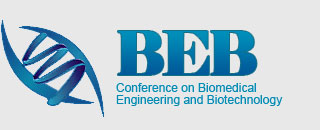Invited Speaker--Dr. Tomáš Etrych

Research Professor, Head of Department of Biomedical Polymers, Institute of Macromolecular Chemistry CAS, Czech Republic
Tomáš Etrych has completed his PhD in Polymer chemistry from Charles University in Prague, now he is a Research Professor of Polymer chemistry and head of Department of Biomedical Polymers of Institute of Macromolecular Chemistry of the CAS and Head of laboratory of polymer therapeutics and diagnostics, BIOCEV, Biotechnology and Biomedicine Center of the Academy of Sciences and Charles University in Vestec. He has published more than 140 papers in reputed international journals, which were cited more than 4000 times and is an author of 9 patents. His research focus is based on preparation and characterization of water-soluble and micellar drug delivery systems for effective treatment of cancer and inflammatory diseases. He is a member of the editorial board of the Journal of Controlled Release and Pharmaceutics.
Speech Title: Polymer nanotherapeutics for advanced treatment of neoplastic and inflammatory diseases
Abstract: In recent years new formulations of "classic" cytostatic molecules, so called targeted drug delivery (TDD) seems to be a very advanced strategy in the treatment of various diseases. Indeed, combination of therapeutic potential with non-invasive diagnostics can increase their potential and form so called efficient theranostics. These systems should enable concurrently observe the disease progression and system pharmacokinetics. In the presentation biodegradable star or micellar polymer-drug conjugates designed for enhanced passive tumor accumulation and release of drug in the acidic milieu of a tumor will be presented. Moreover, various polymer carriers and their drug conjugates intended for CD19/CD20/CD22/CD38-based active targeting delivery to aggressive lymphomas will be presented as well. The general therapeutic efficacy of these theranostics is based on three mechanisms of selectivity toward solid tumors: I) drug accumulation in tumor tissues driven by passive accumulation, II) tumor-microenvironment driven degradation of polymer structure to smaller polymers more suitable for extravasation into the tumor mass and III) pH-dependent release of drug from polymer-drug conjugate, which releases free drug more efficiently at a lower pH in tumor microenvironment and tumor cells. Results of in vivo non-invasive multispectral optical imaging and positron emission tomography (PET) of fluorescently or radio labelled polymer carriers will be presented and discussed.
Acknowledgement: This work was supported by the Ministry of Education, Youth and Sports of the Czech Republic within the National Sustainability Program II (Biocev FAR LQ 1604) and by the project of INTER-EXCELLENCE (msmt-39022/2018-1).
Keywords: drug delivery, targeting, cancer treatment, active targeting

